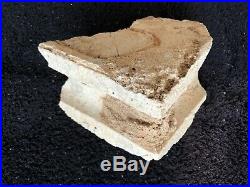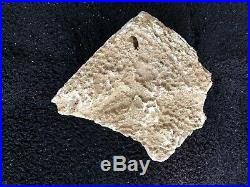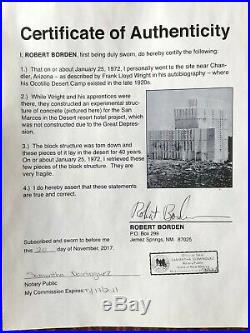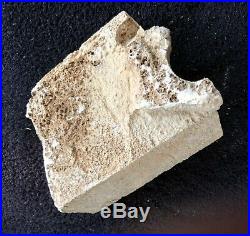
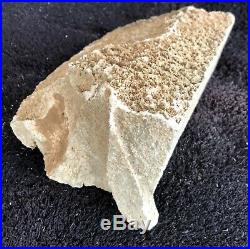
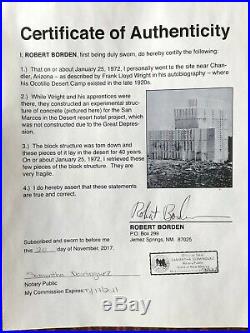
Original block fragment from prototype of never-built Frank Lloyd Wright design, San Marcos in the Desert, Ocatillo Desert Camp, 1929. Includes notarized Certificate of Authenticity. From the Frank Lloyd Wright Foundation website. Frank Lloyd Wright began scouting out Arizona in 1928, while consulting on architect Albert Chase McArthurs design for the Arizona Biltmore Hotel. Although not the architect of record, Wright contributed to the project with some attention-catching work and began to explore the Valley of the Sun. During this time, Wright met a patron, Dr. Chandler was ambitious and looking to build a luxury resort, San Marcos-in-the-Desert, which was described as the perfect desert-resort for jaded New Yorker millionaires (Wright, Living in the Desert, 1949). In order to work on this, Wright and his entourage established a camp in 1929, named Ocatillo, in an area to the east of Phoenix named Chandler after Dr. The Ocatillo camp turned out to be a learning and testing ground for many of Wrights ideas about building in the desert. The plan followed the contours of the land. The arrangement of the buildings made an enclosed outdoor space, an asymmetrical courtyard or plaza. There was an asymmetry, and irregularity, guided by the dotted line of the deserts profiles and textures. At the time, modernist architects predominantly were using even, straight, regular lines and the resulting volumes; and in contrast, Wright used organic lines and volumes that he likened to the desert environmentone reason he stood out among the leading architects. At Ocatillo, block prototypes were made for vertically fluted masonry meant for San Marcos-in-the-Desert. Prior to this, Wright had used textile blocks in a few of his California projects, but these were reconceived and reconsidered by studying the structural ribs of saguaros, with an intention of creating appropriate Arizona architecture. This lesson from the saguaro is in the cactuss interior structure. Wright wrote that the saguaro is the perfect example of reinforced building construction. Its interior vertical rods hold it rigidly upright maintaining its great fluted columnar mass for six centuries or more. 309-310 This resort was about ready to go into construction, but due to the 1929 stock market crash the project was halted. The abandoned Ocatillo eventually disappeared as materials were taken for other uses. The item “Original Frank Lloyd Wright block fragment #2 San Marcos in the Desert, Ocatillo” is in sale since Tuesday, April 21, 2020. This item is in the category “Antiques\Architectural & Garden\Other Architectural Antiques”. The seller is “rbmurals-9″ and is located in Jemez Springs, New Mexico. This item can be shipped to United States.
- Material: plaster
- Original/Reproduction: Vintage Original
- Decade: 1920s
- Color: White
- Features: Reclaimed
